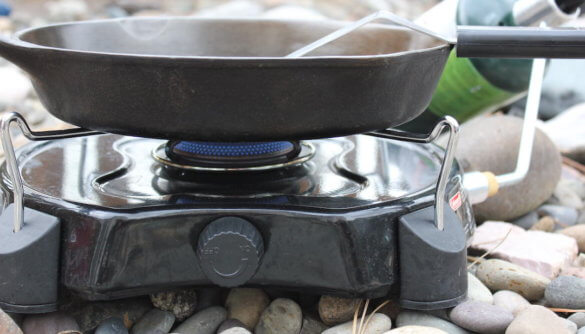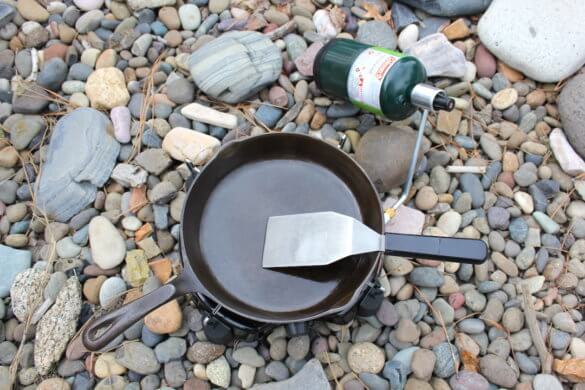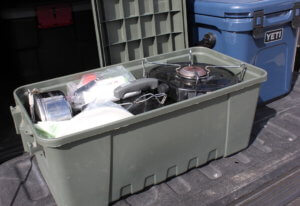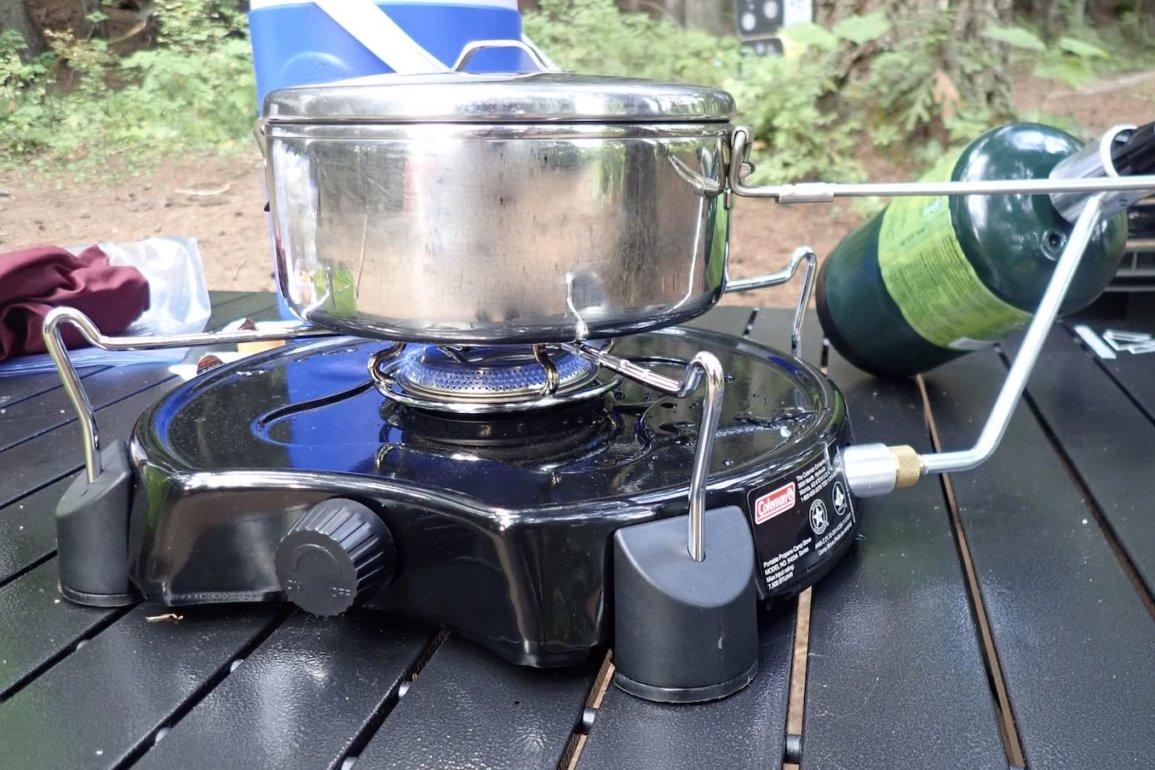The Coleman PowerPack Propane Stove is a super simple single-burner camping stove that runs on easy-to-find 16.4 oz propane bottles.
I first bought the Coleman PowerPack Propane Stove for a very specific purpose: I wanted a single-burner, low-profile stove that would fit into a medium Plano Sportsman’s Trunk with my portable and affordable Weber Go-Anywhere Gas Grill.
After using it, not only does it fit where it needs to fit, I’ve become a fan of the stove. This surprised me, so much so that the Coleman Powerpack Propane Stove made it into our Man Makes Fire guide to the best camping stoves for 2020.
Coleman PowerPack Propane Stove Review

The Coleman PowerPack Propane Stove produces a clean and consistent flame with an output of up to 7,500 BTUs. Many 2-burner camping stoves, including the Coleman Classic Camping Stove, have burners that produce 10,000 or more BTUs. Still, 7,500 BTUs is enough power for basic camp cooking situations.
As long as you’re not in a race to boil a pot of water faster than everyone else, the Coleman PowerPack Propane Stove will still get the job done. And for most camp cooking, you’re not running your burners at full blast. What’s arguably most important is flame adjustability.

The Coleman PowerPack Propane Stove has an adjustable flame, and while it’s a bit finicky, I can turn it down to a simmer easily enough. The key is slowly turning it down and paying attention as you do it so you don’t accidentally shut it off.
If you do that, you’ll have to relight the stove, which takes a match or a camp lighter. It’s not hard, but the point remains: This stove doesn’t have a built-in ignitor.
But back to heat and power. If you want to get a cast iron pan up to temp, for example, it’s going to take you a couple extra minutes before you’ll be able to create a great sear or start cooking pancakes. If you try to cook in windy conditions, it might take longer because the wind will blow heat away from your pans.
No Wind Screen
The Coleman PowerPack Propane Stove doesn’t have a windscreen, which means you might have to set up your own windbreaks out of rocks or coolers or whatever you have on hand.
The flame is relatively unprotected from wind, so if you’re trying to simmer something on low, you’ll need to block the wind or pay attention or your flame might get blown out.
Still, this little stove works remarkably well for what it is.
The chrome-plated grate is stout and can hold up to a 12-inch pan or pot.

Stable Base
What I appreciate most that the stove has a fairly low profile but also has a wide, stable base. The base stability and grate design make it easy to cook on. For instance, if you’re stirring or flipping or scraping, the grates have bent ends that help keep a pan or pot on the grate.
If you’re looking for the best overall value in a camping stove, you might want to consider the 2-burner Coleman Classic Camping Stove. It’s also in our guide to the best camping stoves, and it doesn’t cost much more than the single-burner PowerPack.
It’s a Basic Camp Stove!
Just remember that this is a very basic camp stove. I tend to use the Coleman PowerPack fast day trips, say in the trailhead parking lot after a hike, in the parking areas of some ski hills, or near a river for a hot lunch by a trout stream.
For longer camping trips, I prefer bigger, multi-burner camp stoves. As always, we recommend that you consider and imagine your most common use cases and situations. If you think a basic single-burner stove will meet your needs, it probably will.
Will It Fit? PowerPack Stove Dimensions

The PowerPack Propane Stove is 13 7/8″ measured on the diagonal between the outermost edges of the rubber feet on the base. The height is 4″ to the highest portion of the grate at each corner.
Of course, the actual footprint of the stove will be a bit bigger due to the design of the propane fuel connector, which sticks off to the back and side when you’re using the stove. (Most propane camping stoves have similar designs.)
The PowerPack Propane Stove weighs in at 3.25 lbs, not counting any 16.4 oz propane bottles you’ll need for fuel.
The Verdict: Great Little Camp Stove
The Coleman PowerPack Propane Stove is a great little camp stove if you have modest camp cooking demands. It’s not flashy and it’s not particularly powerful. It does, however, get the job done and produces a usable flame pattern. If you’re on the fence with this one, don’t be — it’s a good little camp stove offered at a reasonable price. Just don’t ask it to be something it’s not and you’ll likely be happy with it.
Get the Gear:
- Coleman PowerPack Propane Stove
(also available from Bass Pro Shops with FREE 2-day shipping) - Weber Go-Anywhere Gas Grill
- Plano Sportsman’s Trunk – medium


